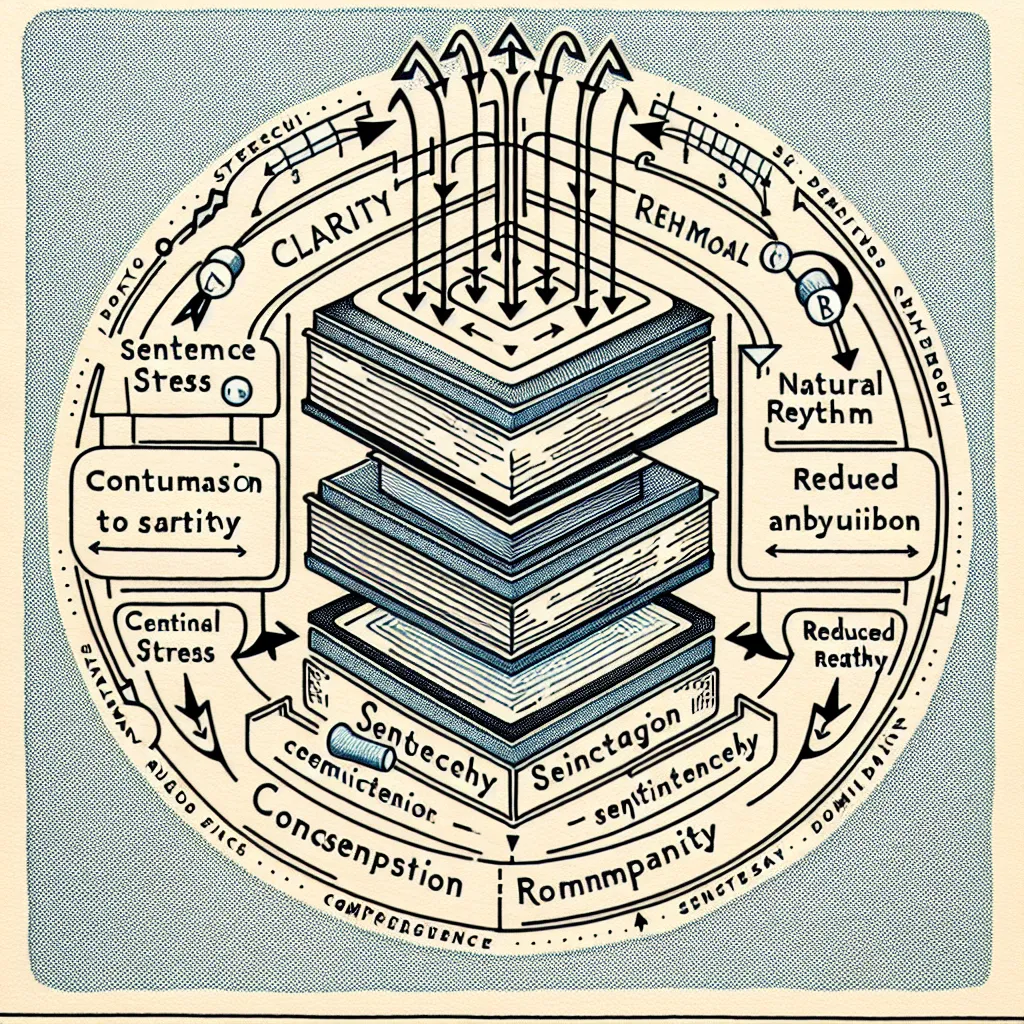Mastering the use of stress in English sentences is crucial for clear and effective communication. Whether you’re a beginner or an advanced learner, understanding and applying stress patterns correctly can significantly improve your spoken English. This guide will provide you with in-depth knowledge and practical tips to enhance your sentence stress skills.
Understanding Sentence Stress in English
Sentence stress refers to the emphasis placed on certain words within a sentence. In English, stress plays a vital role in conveying meaning and maintaining the rhythm of speech. Unlike some languages where each syllable receives equal emphasis, English relies heavily on stress patterns to highlight important information.
The Importance of Sentence Stress
Proper sentence stress is essential for several reasons:
- Clarity: It helps listeners identify key information in your speech.
- Comprehension: Correct stress patterns make it easier for others to understand your message.
- Natural rhythm: It gives your speech a more native-like flow and cadence.
- Reduced ambiguity: Stress can differentiate between similar-sounding phrases or words.
 Importance of sentence stress
Importance of sentence stress
Basic Principles of Sentence Stress
To use stress effectively in English sentences, consider these fundamental principles:
- Content words vs. function words: Content words (nouns, main verbs, adjectives, adverbs) are typically stressed, while function words (articles, prepositions, auxiliary verbs) are usually unstressed.
- New information: Words introducing new or important information in a sentence tend to receive more stress.
- Contrast: Words used to create contrast or emphasis are often stressed.
Techniques for Mastering Sentence Stress
Improving your sentence stress skills requires practice and awareness. Here are some effective techniques to help you master this aspect of English pronunciation:
1. Listen and Imitate
One of the best ways to improve your sentence stress is by listening to native speakers and imitating their patterns. Pay attention to:
- Which words they emphasize
- How they reduce unstressed words
- The overall rhythm of their speech
Practice with audio materials, podcasts, or English language learning resources that focus on pronunciation and stress patterns.
2. Mark Stress in Written Sentences
When reading English texts, try marking the stressed words. You can use uppercase letters, underlining, or bold text to indicate stress. For example:
- I LOVE eating ICE CREAM on HOT summer DAYS.
This visual representation can help you internalize stress patterns more effectively.
3. Practice with Stress-Timed Rhythm
English is considered a stress-timed language, meaning the time between stressed syllables tends to be equal. To practice this concept:
- Choose a sentence and identify the stressed words.
- Clap or tap a steady beat while saying the sentence, ensuring that the stressed words fall on the beat.
For instance: “The CAT sat on the MAT” (clap on CAT and MAT)
4. Use Contrastive Stress
Experiment with changing the stress in a sentence to alter its meaning or emphasis. For example:
- I didn’t say he stole the MONEY. (Someone else stole it)
- I didn’t say HE stole the money. (Someone else stole it)
- I didn’t say he STOLE the money. (He obtained it some other way)
This exercise helps you understand how stress can significantly impact the meaning of a sentence.
 Contrastive stress in English sentences
Contrastive stress in English sentences
Common Mistakes in Sentence Stress
Being aware of common errors can help you avoid them in your own speech. Here are some frequent mistakes made by English learners:
- Stressing every word: This creates a robotic, unnatural rhythm.
- Neglecting to stress content words: Failing to emphasize important words can lead to unclear communication.
- Overemphasizing function words: Placing too much stress on articles or prepositions can sound unnatural.
- Inconsistent stress patterns: Varying stress inappropriately can confuse listeners.
To correct these issues, focus on identifying content words and maintaining a consistent rhythm in your speech.
Advanced Techniques for Sentence Stress
As you become more comfortable with basic stress patterns, you can explore more advanced techniques:
1. Stress for Emphasis
Learn to use stress to highlight specific information or create emphasis:
- “I ABSOLUTELY love this movie!” (emphasizing the intensity of the feeling)
- “She’s the BEST teacher I’ve ever had.” (stressing the superlative)
2. Stress in Compound Words
Understand how stress works in compound words:
- BLACKbird (stress on first part)
- black BIRD (stress on second part, indicating two separate words)
3. Stress in Phrasal Verbs
Recognize stress patterns in phrasal verbs:
- “Turn OFF the lights.” (stress on the particle)
- “Turn the lights OFF.” (stress shifts to the end when object is between verb and particle)
For more advanced strategies on mastering English stress patterns, you might find our article on Strategies for Mastering English Stress Patterns helpful.
Practical Exercises for Improving Sentence Stress
To reinforce your understanding and application of sentence stress, try these exercises:
- Record yourself reading a passage, then compare your stress patterns with a native speaker’s recording.
- Practice tongue twisters focusing on stress, such as “Peter Piper picked a peck of pickled peppers.”
- Use stress to differentiate between noun-verb pairs like “REcord” (noun) and “reCORD” (verb).
- Create dialogues emphasizing different words to change the meaning of the conversation.
Remember, consistent practice is key to improving your sentence stress. For tips on incorporating pronunciation practice into your daily routine, check out our guide on How to Practice Pronunciation in Daily Life.
Conclusion
Mastering the use of stress in English sentences is a powerful tool for enhancing your communication skills. By understanding the principles of sentence stress, practicing regularly, and being mindful of common pitfalls, you can significantly improve your spoken English. Remember that progress takes time, so be patient with yourself and enjoy the learning process.
We encourage you to apply these techniques in your everyday English conversations and continue exploring resources to further develop your pronunciation skills. For additional support in refining your English accent, don’t miss our article on Tips for Reducing Your Foreign Accent in English.
Keep practicing, and soon you’ll find yourself speaking English with greater confidence and clarity!




